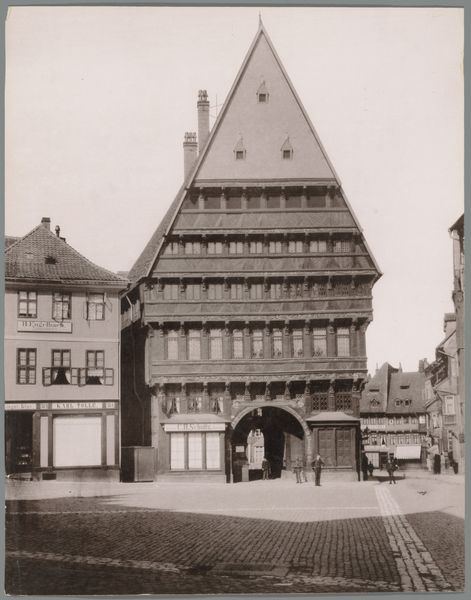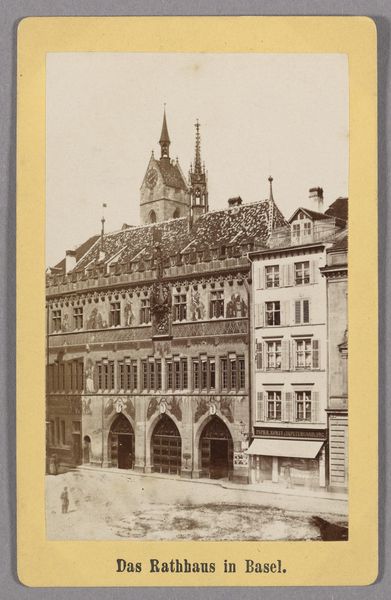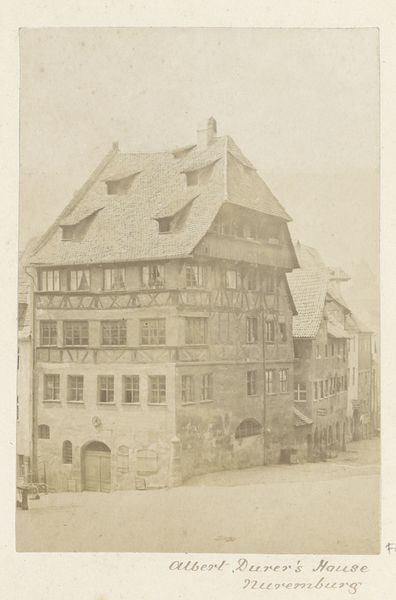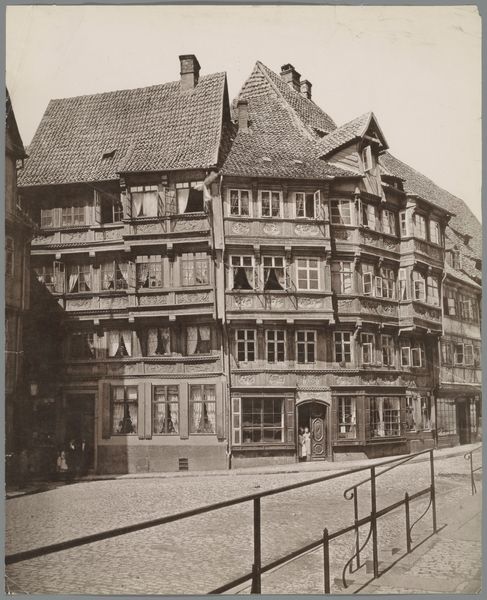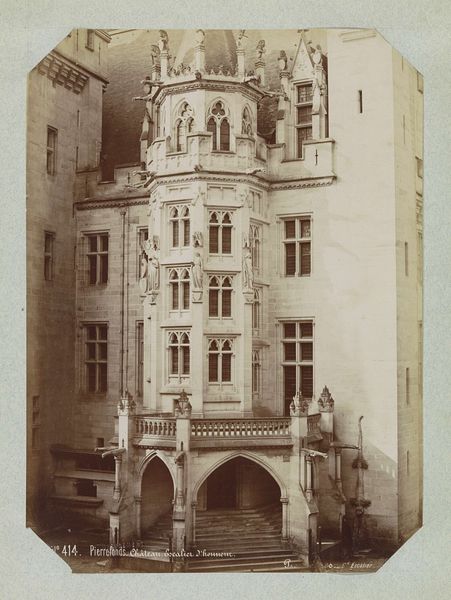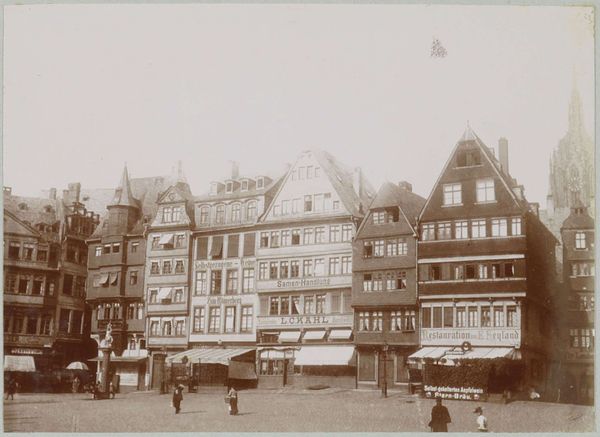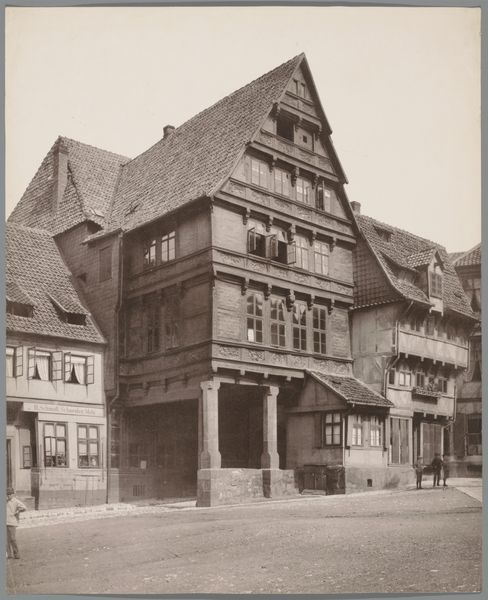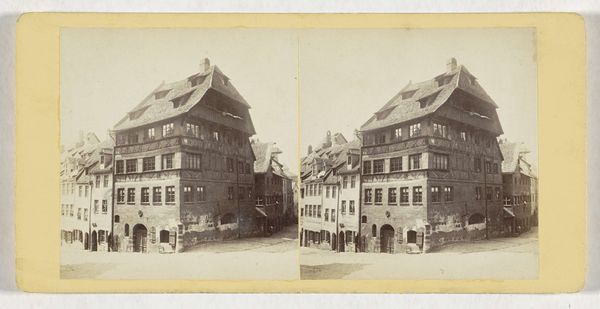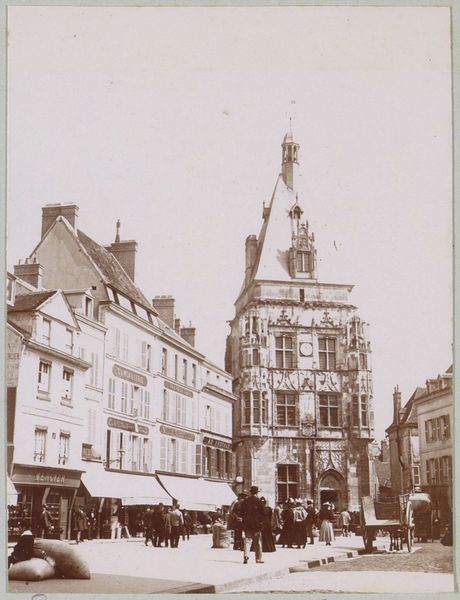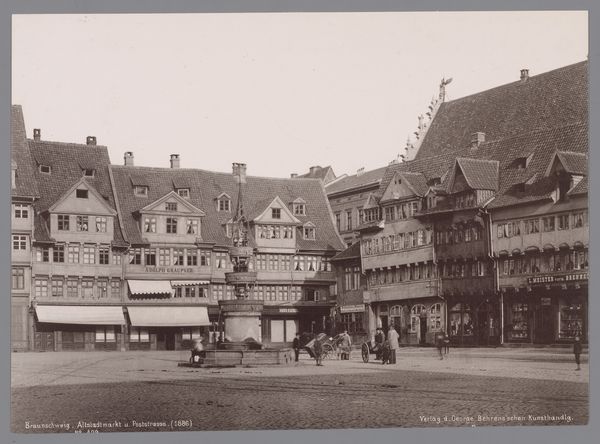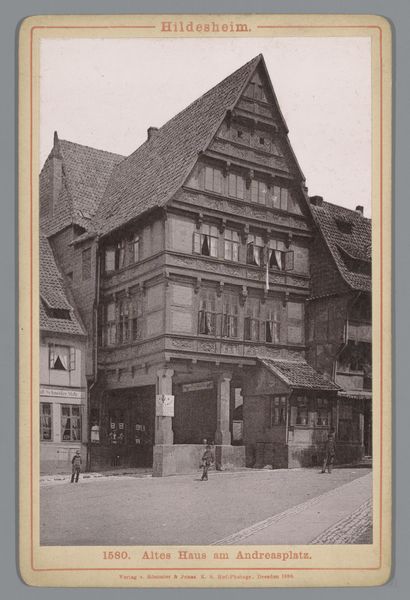
photography, albumen-print, architecture
#
pictorialism
#
street-photography
#
photography
#
architectural drawing
#
cityscape
#
albumen-print
#
architecture
Dimensions: height 312 mm, width 203 mm, height 474 mm, width 321 mm
Copyright: Rijks Museum: Open Domain
Carl Friedrich Mylius made this photograph of Haus Frauenstein and the Salzhaus in Frankfurt am Main, Germany, some time in the 19th century. It’s a fascinating image not just for its architectural detail, but for what it tells us about the city's social and economic life at the time. Look closely, and you'll see the signs of commerce: shop fronts, signage, even a passing carriage hinting at a bustling urban center. But there's more to it than meets the eye. The Frauenstein building itself, with its steep gabled roof and decorative facade, speaks to Frankfurt's history as a prosperous trading hub in the late medieval period. The presence of the Salzhaus, or Salt House, also points to the city's role in the salt trade, a crucial commodity in pre-industrial Europe. These buildings weren't just structures; they were symbols of Frankfurt's economic power and its connections to wider networks of trade and exchange. To understand this image fully, we need to delve into Frankfurt's archives, tracing its history as a Free Imperial City and a center of commerce. Only then can we appreciate the full significance of Mylius's photograph as a document of a particular time and place.
Comments
No comments
Be the first to comment and join the conversation on the ultimate creative platform.
